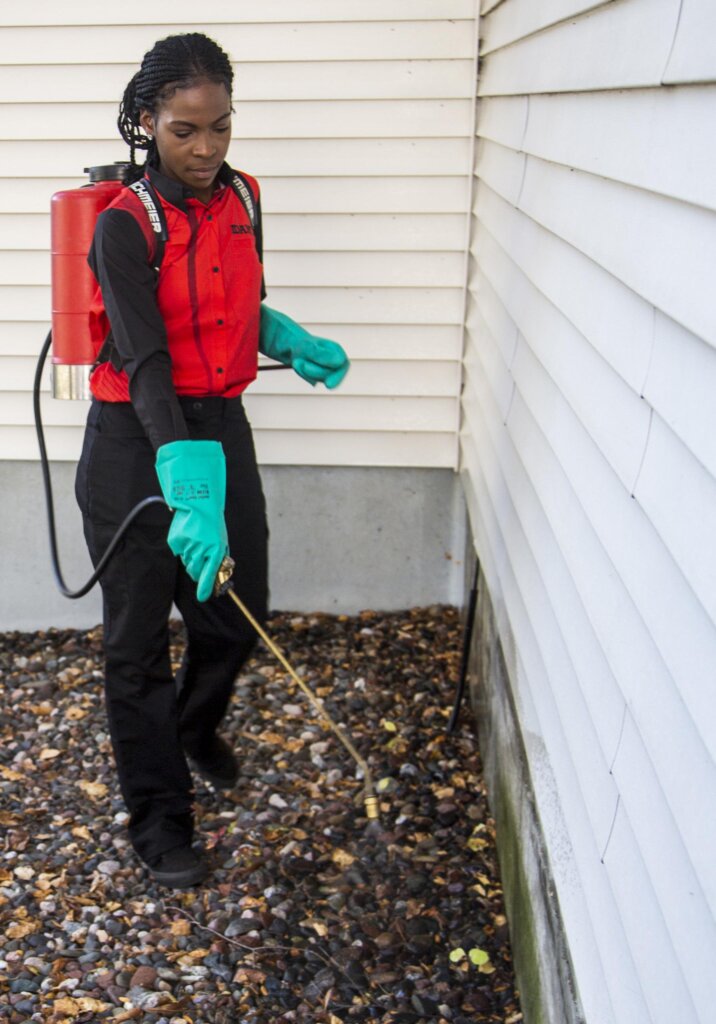Reputable A1 Bed Bug Exterminator Charlotte - Do Away With Bed Bugs Quick
Reputable A1 Bed Bug Exterminator Charlotte - Do Away With Bed Bugs Quick
Blog Article
Bed Insect Treatment Malfunction: Comparing Chemical Vs. Non-Chemical Solutions
In the world of insect control, specifically when handling the relentless issue of bed insects, the choice in between chemical and non-chemical therapy services can be a crucial one. Both methods supply unique benefits and drawbacks, affecting variables such as efficiency, safety and security considerations, and total cost. By taking a look at the nuanced information of each method, a more clear understanding of which course to go after in dealing with a bed pest invasion can be acquired.
Performance of Chemical Treatments
Chemical therapies for bed bug infestations have actually been widely acknowledged for their quick and potent efficiency in eradicating these insects. When taking into consideration the effectiveness of chemical therapies, it is essential to comprehend that they can supply a fast and comprehensive remedy to a bed pest problem. Professional pest control operators often rely upon pesticides to target bed pests at numerous phases of their life process, consisting of adults, nymphs, and eggs. These chemicals normally function by interfering with the bed pests' nerve system, resulting in paralysis and eventual death.
Furthermore, chemical treatments have the advantage of supplying residual impacts, indicating that they can remain to eliminate bed bugs also after the preliminary application. This recurring action is particularly beneficial in combating any kind of possible re-infestations. Furthermore, the quick action of chemical treatments can bring alleviation to individuals facing severe bed bug invasions, permitting them to gain back control of their space quickly.
Safety Interest In Chemical Solutions
One important element that requires cautious factor to consider when making use of chemical solutions for bed bug treatment is making certain the safety of residents and the atmosphere. Direct exposure to certain chemicals used in bed insect treatments can lead to breathing problems, skin inflammation, or various other negative reactions, especially in individuals with pre-existing conditions or sensitivities.
Moreover, the environmental influence of chemical options is an additional considerable factor to consider. Some chemicals utilized in bed bug treatments may be damaging to helpful pests, wild animals, and environments if they seep right into the dirt or water systems. It is vital to utilize chemical treatments judiciously, adhering to safety and security guidelines, and thinking about less toxic choices to mitigate these threats and make certain the effective and risk-free administration of bed insect infestations.
Advantages of Non-Chemical Techniques
Thinking about the potential safety concerns and ecological effect related to chemical remedies for bed insect treatment, exploring non-chemical strategies provides a promising choice with a number of distinct advantages. Non-chemical techniques offer a more secure choice for households, specifically those with people, animals, or children sensitive to harsh chemicals. These techniques eliminate the threats of exposure to poisonous compounds, decreasing the possibility for unfavorable health results. Additionally, non-chemical therapies are eco-friendly, as they do not contribute to air or water contamination, making them a sustainable option for pest control.
Additionally, non-chemical solutions can be reliable in targeting bed pests, including hard-to-reach locations where chemical therapies might not permeate - A1 bed bug treatment in charlotte. Techniques such as warm treatment, vacuuming, steam cleansing, and bed mattress encasements give detailed obliteration without the usage of damaging chemicals.
Limitations of Non-Chemical Treatments

In addition, non-chemical treatments frequently need multiple applications to accomplish effective removal. This can be taxing and may not always guarantee total removal of all bed bugs and their eggs, especially in covert or hard-to-reach places.
In addition, the success of non-chemical treatments greatly relies upon proper application and thoroughness, which can be testing for people without specialist competence. Poor application of non-chemical methods may lead to insufficient obliteration, resulting in relentless problems and the need for extra treatments.
As a result, while non-chemical therapies have their advantages, it is necessary to recognize these constraints and consider them when determining the most effective method for taking care of bed bug infestations.
Expense Comparison: Chemical Vs. Non-Chemical Options
Provided the limitations linked with non-chemical treatments, an important facet to assess in the context of bed bug monitoring is the cost contrast between chemical and non-chemical alternatives. In comparison, non-chemical therapies like heat therapy or steam can be extra costly, with prices varying from $1,000 to $6,000 for an entire home. While the first expense of chemical therapies may appear lower, multiple therapies may be called for to fully remove the infestation, possibly increasing the overall price.
Final Thought

Thinking about the possible safety and security issues and environmental impact associated with chemical remedies for bed pest treatment, checking out non-chemical strategies provides a promising choice with numerous distinctive advantages.Provided the limitations associated with non-chemical therapies, a necessary element to assess in the context of bed pest administration is the expense comparison in between chemical and non-chemical choices. In contrast, non-chemical therapies like heat therapy or heavy steam can be much more pricey, with expenses ranging from $1,000 to $6,000 for a whole home. While the preliminary cost of chemical treatments may appear lower, numerous therapies may be called for to completely get rid of the invasion, potentially raising the general price.In final thought, when comparing chemical and non-chemical bed pest therapy choices, it is essential to take into consideration effectiveness, safety and security, benefits, constraints, and price.
Report this page